PROJECT
Ecology as Infrastructural to Urban Fabric and Incorporated to Heritage
Sep 2, 2024
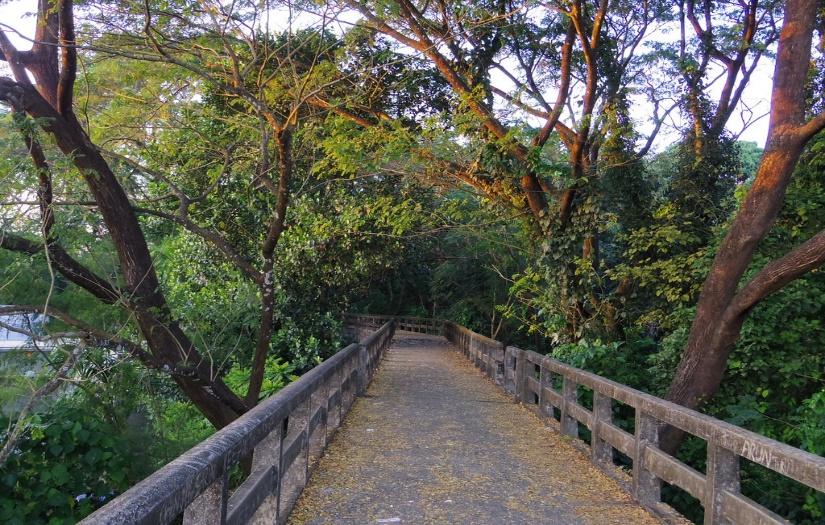
Introduction
The proposed and planned work comes broadly through components that may be teased out as the intangible heritage of urban/urbanising spaces in Kerala as well as some that constitute as tangible spaces that could well be reimagined into city aesthetic and everyday lifeThe Centre for Urban Studies (CUS), a relatively new space works out as an extension centre from the School of International Relations and Politics, that is currently unfunded and works out of sheer scholarly interest and research comradery. We have been working with both the dimensions of heritage that get transmitted across groups, communities and broader actors in interaction with ecology, across generations as well marking out spaces that are more tangible but in gross neglect because of divergent reasons. The proposal comes out of the above two emphasis
The CUS consolidates resources and gives foundational inputs by ways of interventions, lab works, hands on assignments as well as academic workshops and production pertaining to:
- Genealogy of Cities (with emphasis on Kerala)
- Character of Urban Spaces
- The possibilities and limits of cities as global and local ethnographic sites
- The past, present and future of Urban Spaces/cities
- City in relation to other cities (inter-urban processes)
- Relationships with historical formations of the environmental, political, economic, social and historical formations.
The interdisciplinary engagements as well as the activities of extension are planned through an eventually fully functional Urban and Political Ecology lab that can run with in synergy with urban bodies and city vision programmes. The focus will be on:
- Urban formations and city spaces: global cities, post- 90s cities, and southern cities.
- Ethnography of Urban Processes in their relationship with capital and deployments of capital.
- Anthropologies of formal and informal boundaries within urbanising contexts.
- The different objects and materialities associated with the city from the waste dumps to built-infrastructures that enter in peculiar ways to urban networks.
- The structural inequalities built into the urban spatial imaginations.
- Settlement patterns and ways forms of resources get used.
- The necessity to go beyond the urban statistics and figures to wages means of living, and changing nature of work.
- Relationships between the rural and urban in the contexts of climate ethnography, environmental crisis and food security.
- Architectural interventions and politics of design.
- Marking out spaces of ecological significance in fast urbanising and industrial spaces
Proposal
The specific proposal on the intangible ecologies as well as select tangible spaces comes on the shoulders of the aforementioned broad frames. The realisation of this work will of course depend on the support we can eventually garner from different quarters.Marking out these as possible spaces of creative urban intervention and design is thought to contribute to the holistic well-being as well as redeployment of spaces of heritage.
- The first part marks out ecological patches within the more pronounced urban nodes.
The early green belt regulations around industrial zones and subsequent green tribunal observations as well as the reports filed contain provisions that ensure green patches in Industrial regions mentioned. Further there is the Kerala Conservation of Paddy Land Wetland Act 2008, The LSGD Planning provisions for green patches, The CPCB provisions around regions where waste treatment is done (2019), or the draft master plan of the town planning department which was redone in 2015 with a proposal for protecting the green patches around urbanising parts. All the provisions have to be consolidated and read alongside global agendas on sustainability like SDG 11 and the specific clauses on ecology and environment in urban spaces. The proposal here is to further incorporate the relational stories of human as well as the other than human elements in ecology as well as the ornithological and biodiversity potential of urban spaces especially in Kochi where the policy provisions could become a paradigmatic precedent where ecological patches around industries are fully protected as intangible heritage. There has to be a policy incorporation of such patches with added significance of the diversity of avian, amphibian and reptilian life as well as important bio-ecological lungs for the urban region. The idea is to designate such ecological patches as zones that could be preserved as well as brought into eco-responsive transactions and education. Ethnographic work has already been done alongside. And we identify documentaries made by certain groups. The work that remains is a consolidated presentation as a case for urban policy.
They are the patches that surround the industrial spaces especially along lower courses of Periyar:
- In Eloor/Edayar Industrial region (Ernakulam) - This is a space that received the first wave of industrial urbanisation post-independence, with the heaviest concentration of industries as well as habitation. These have been among the few urban convergence zones in Kerala to where people settled from different parts of the state. And this is also the space that has the greatest concentration of pollution and chemical pollution.
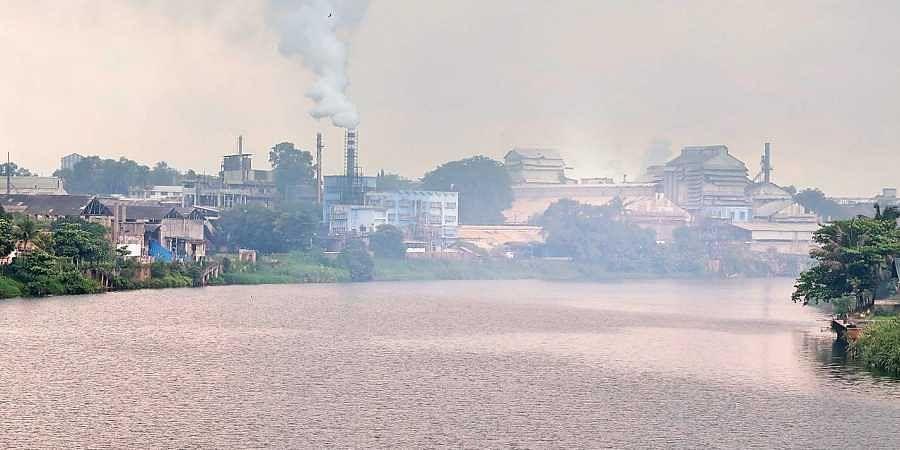
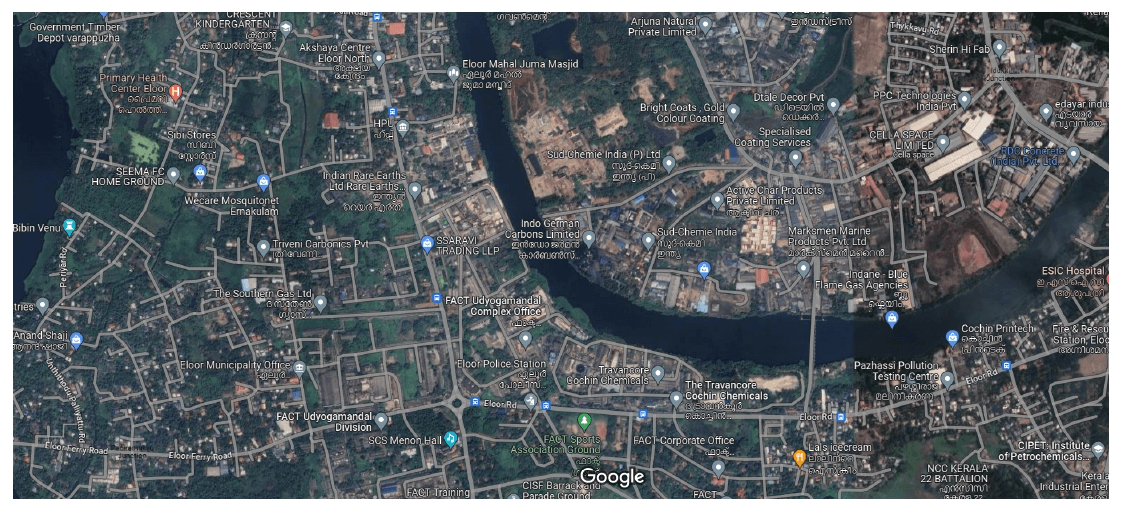
- Green Patches around Chitrapuzha (Near Kakkanad) - This where the Kakkanad Water Metro Station, Traco Cable and HPCL Plant converge. The region becomes significant as a convergence point of two types of urban processes- the older developmentalist kind and the new service oriented urban processes.
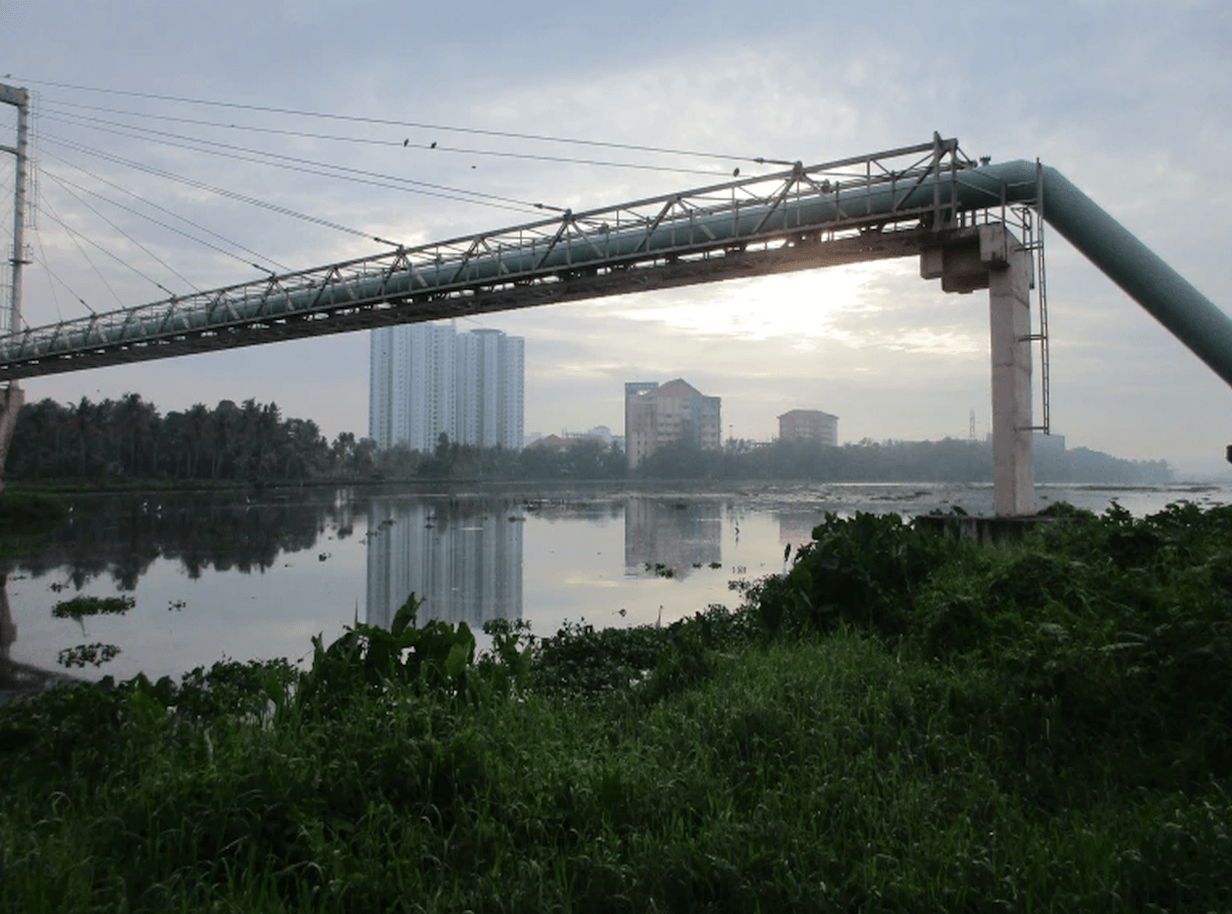
- The Green Patch around HMT Industrial Zone (Kalamasserry) - There are documentaries on the avian and reptilian life here as well as that on the ecological significance. The green patches around the HMT have been under pressures of development for long and there have been measures to designate green patches as spaces lying waste. In addition, they are increasingly used as waste dumps. The plan is to redesignate the patch as holding immense relationality with life around in maintaining water table, duck farming, and holding a rivulet of Periyar.
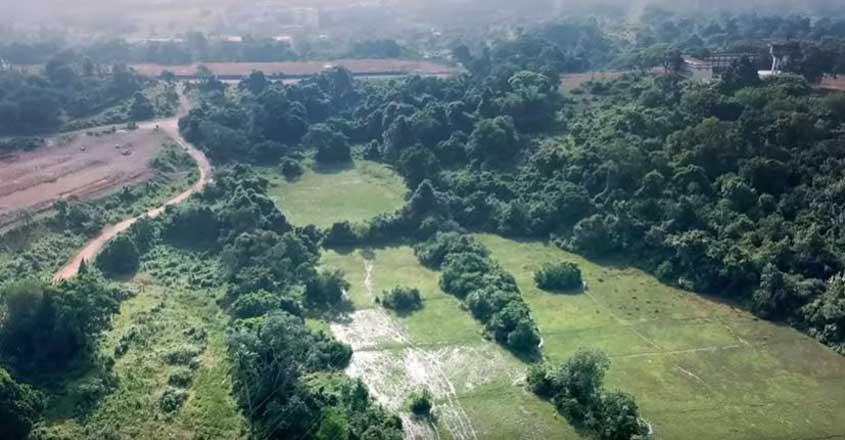
- The Aqueduct (Connecting Aluva Mini Market to outer regions) - Perhaps this is the only walkway of this length that cuts across an urban region (for about 3 kilometers) and which is devoid of vehicular traffic. With a major gap of comprehensive and mandatory provision for public spaces and no-automobile free zones, such walkways could be an extremely significant intangible heritage of urban Kochi if protected and maintained for twenty-four-hour use.

The logic for marking out such green patches as intangible heritages is the fact that urban processes keep seeing capital necessarily acquiring spatial form of self-expansion of value. In addition, as social sciences scholarship perceptively understood, there is a tendency to designate the less legible and less comprehensible zones as waste. There is a threat of this happening when the once industrial buffers lose significance when industries cease to operate. Large scale urbanisation can have all kinds of unintended consequences. Incorporation of the patches suggested could be paradigmatic of a more comprehensive policy initiation across Kerala. This will be perhaps one of the most futuristic actions for urban well-being.
- On the second part of the proposed work made with respect to culture mediated climatic knowledge and indigenous practices with urban implications, I focus on two urban regions, both watery landscapes representative of such spaces across the state, Chellanam and Valanthakkad (Ernakulam). I can depend on own work that has gone in and further develop on some of the excellent field inputs we have had over a decade from people on the ground. The practices refer mostly to climate adaptive practices that cannot be totally celebrated because of the desperate situations therein. But at the same time there are cues one could gain from co-evolutions with urbanisations in the surrounding spaces- whether these are of the fishing hamlets or clam collectors.
Culture mediated climate knowledge involves drawing on local or indigenous practices in varied ecologies within the urban environs, whether these are riparian or estuarine habitats suggested or otherwise. The holistic blending of contextually informed climatic knowledges that communities have shaped in response to climate may be retrofitted in more uncertain environs as with the case of Chellanam with coastal incursions as well as water related modulations. This could be by giving support in terms of policy. The tangible and intangible cultural assets need promotional environs in order to fortify resilience. Concentrated urbanisations, like in metropoles are absent in Kerala. But it does have its share of problems emanating elsewhere as well as the homegrown concentrated industrial and consumerist pollutions. The consequences are enhanced by the ever-increasing frequencies of floods and coastal impacts especially on the most marginalised.
Age old practices along the coasts that have confronted the brunt of climatic variations can add to such holistic perspectives. In Valanthakkad one might see knowledge acquired through generations of oyster and clam collectors as well as multiple water-based cultures that have come in and historically adapted to this place. The array of practices, like sustainable food dependencies, water harvesting, building techniques or warning systems that might be fast fading away needs proper documentation and retrofitting to be enabled during the present and future needs of this city.
Frame of Work and Outcome:
The method of understanding ecologies that are marked out as intangible heritage is ethnographic. The suggested spaces in regions are all understood in terms of the urban discourses they are part of, viz. older developmentalist, new urban trajectories, designated special economic zones. The green zones as well as the climatic responses are subject to continuous transformations as a result of the powerful processes that they transact with.So, the way of making them motifs here is to translate these intangibles as urban ecological infrastructures. Ethnography of ecological infrastructure offers a way to envision the broad array of aspects that support; in tangible and intangible ways, materially and ideationally as well as culturally; the beings in question whether they are human or non-human. Ecological infrastructure seeks to factor in the experiential realm of lives that are mediated by the different infrastructures, which are natural or built; though the latter dichotomy may be subject to questioning. The foci of the spaces and work in the context of urbanisation and new urban forms, the caught in between situations in processes of development and powerful designations eventually highlights the different exclusions even in the most inclusive policies. The work seeks to address such gaps in everyday urban transactions and reality. Infrastructure is often imagined as methods of coping and adjustments. But beyond this I project these as emergent sets of transactions that anticipate certain ways things could be.